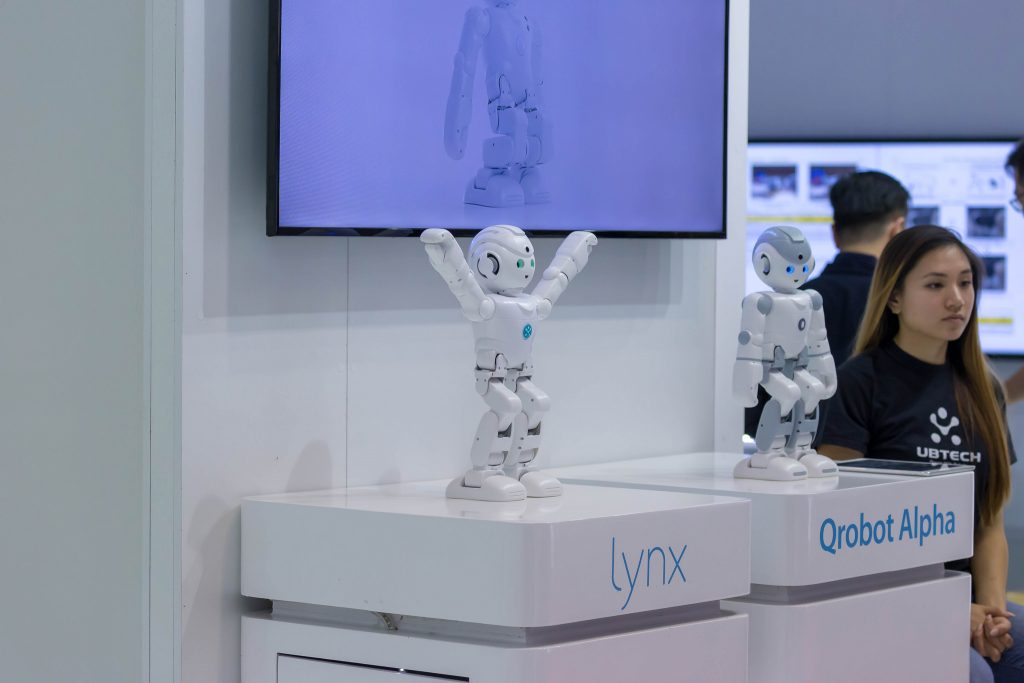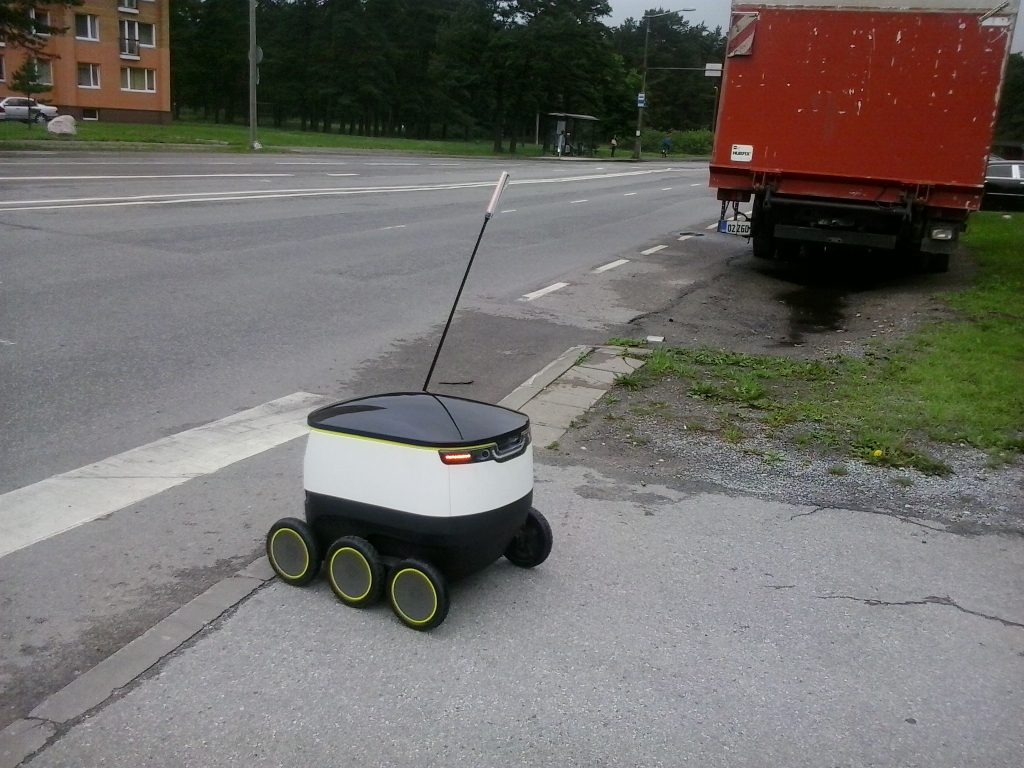Right from the moment artificial intelligence got off the ground, robotics startups were making significant strides in the tech industry. Now, robots are more than just about assembling parts and handling mundane tasks. Technological advancements in machine learning and machine vision have enabled robots not just to behave like humans, but superhumans. Robots can be an assistant at work, a door delivery buddy, a drone that can swim through oceans and fly in the air, a vehicle that can drive itself, or even just a friend to your kids. A significant number of startups are emerging in this space every year and keep bringing something new to the table. Here is a list of five successful robotics startups to watch in 2019.
UBTECH Robotics
UBTECH Robotics is a company that makes humanoid robots. Valued at $5 billion, the unicorn focuses on making affordable domestic robots. Some of their interesting products include Alpha 1 pro (a robot for education and entertainment), Jimu robot (an interactive building block system that helps kids build robots), Cruzr (a cloud-based humanoid robot that offers service applications for industrial and domestic environments), and Lynx (a robot with the features of Amazon Alexa). Despite the existence of significant competitors in the market like Blue Frog Robotics, Jibo, and Groove X, UBTECH successfully manages to generate annual revenue of $150 million.

In May 2018, UBTECH announced that it raised $820 million in its Series C funding. This is the largest funding raised by an artificial intelligence company in history. The company is funded by nine investors including Green Pie Capital and Haier Group. Besides getting investments, the company is also making investments in companies like Video++. UBTECH’s products are sold in over 40 countries in more than 7,000 retail outlets including 5,000 Apple stores.
Saildrone
Founded in 2012, the San Francisco based startup makes sea-going robotic ships for ocean data collection. These autonomous surface vehicles are outfitted with all the instruments required to collect data on the atmosphere and ocean. The technology has a myriad of use-cases including coastal border protection, tracking ocean acidification, and oil spill detection. The Saildrones are capable of sailing the seven seas at 3 to 5 knots per hour. The drones are powered by solar and wind energy, and they can charge themselves even in the middle of the ocean.
The company is working with various governments and private organizations with a mission to build the world’s largest high-resolution datasets. These datasets can offer useful insights like weather forecast, global fishing, carbon cycling, climate change etc. The National Oceanic and Atmospheric Administration (NOAA) leases each drone for $2,500 a day. No wonder the company generates annual revenue of $5 million. Also, Saildrone has raised a total of $88.5 million in four funding rounds and the lead investors include Horizons Ventures and Social Capital.
Starship Technologies

Founded in 2014, the San Francisco-based company makes self-driving robots for delivering food and groceries. The company was founded by Ahti Heinla and Janus Friis, who were also the co-founders of Skype. Starship Technologies focuses on reshaping how door deliveries work. Their ultimate aim is to make local deliveries pocket-friendly.
Starship’s robots are designed to deliver goods from local hubs within 30 minutes. They drive autonomously 99 percent of the time. Starship requires you to install an app from which you can request a bot to pick up your package from the local facility and deliver it to you. The bots now deliver only to the houses within a 2-mile radius but the company has plans of extending the service area.
Starship Technologies has partnered with food delivery companies like Postmates and DoorDash to test its robotic delivery service. Starship robots have traveled over 125,000 miles in 100 cities across 20 countries. The company generates annual revenue of $12 million and has raised $42.2 million so far in two funding rounds.
Flirtey

Flirtey was the first drone delivery service in the world. Founded in 2013, the company aims to save lives by sending emergency medical equipment like defibrillators using drones. The survival possibilities of cardiac arrest victims decrease by 10 percent every minute they wait to receive defibrillation. Deploying automated external defibrillators (AED) via drones can raise the cardiac arrest survival rate from 10 percent to 47 percent. So it is pretty clear how Flirtey solves the problem.
Flirtey has raised $16.2 million in five funding rounds. The company generates $3.2 million annually and competes with Skycatch, Parrot Drones, and 3D Robotics. Partnering with four of the 10 governments that are selected for the Nationwide Drone Integration Pilot Program, Flirtey has become the world’s leading drone delivery startup. It was the first company to get FAA approval for drone delivery in the United States.
The startup has worked with NASA, Remote Area Medical, New Zealand Land Search & Rescue, and Johns Hopkins University of Medicine to deliver medicine to rural healthcare clinics and e-commerce items to consumer homes. Flirtey has also partnered with Domino’s Pizza and 7-Eleven, to deliver food and other consumer products.
Skydio
Founded in 2014, Skydio makes self-flying cameras that do not require a pilot or controller. The flying tool comes with a myriad of technologies to capture the best quality videos. The drone is equipped with 13 cameras to look in all directions at once. One of the coolest hardware is the Nvidia chips that the drones use to follow a human target while constantly updating its maps. It also comes with lots of flight modes including orbit, lead, follow, stadium, and manual. These modes make it a true sports tracking device. The early-stage startup has raised a whopping $70 million in just four years and generates annual revenue of $3.5 million.
The Skydio autonomy platform is a developer toolset. You can use this toolset to create custom software and take advantage of the device’s hardware and machine learning algorithms. As a part of this effort, the company provides two software development kits (SDK): Skills SDK and Mobile (iOS and Android) SDK. Skills SDK enables the developers to access the Skydio R1’s autonomy engine that helps the drone perceive its surroundings. The other SDK will help developers build mobile apps to control the drone. Recently, the company has announced its Apple watch support that would enable users to control the drone using their Apple watch.
Robotics startups: Only the beginning
Robots were invented to assist human beings. Now, they are evolving to perform tasks that human beings cannot. Techniques like neural networking that make transistors behave like the neurons of a human brain, prove that the predictions around artificial intelligence are not just hype. According to a study conducted by Hadoop, Robot Process Automation (RPA) software will be able to replace 140 million employees on a global level by 2025. Because besides making the processes efficient, robots also make them cost-effective. If the 140 million full-time employees are replaced by robots, the companies will be able to save from $5 trillion to $7 trillion. Creativity is the soul of innovation. When the complex and boring tasks are automated, the human race will have more focus on their creativity. So, robots aren’t a threat to human innovation or labor but are a facilitator and a boost to human creativity. Eventually, the world would become a better place to live in.
Featured image: Pixabay



